From giving the most vulnerable a voice to holding the most powerful accountable, great journalism can change the world. But what about the environment?
Hundreds of news outlets joined an effort to increase coverage of climate change ahead of the United Nations Climate Action Summit on Sept. 23.
The results are in — and it was a resounding success.
During the week ahead of the UN summit (Sept. 15-21), readership in the US of topics related to climate change on news websites spiked to more than twice the average of the previous weeks in 2019.
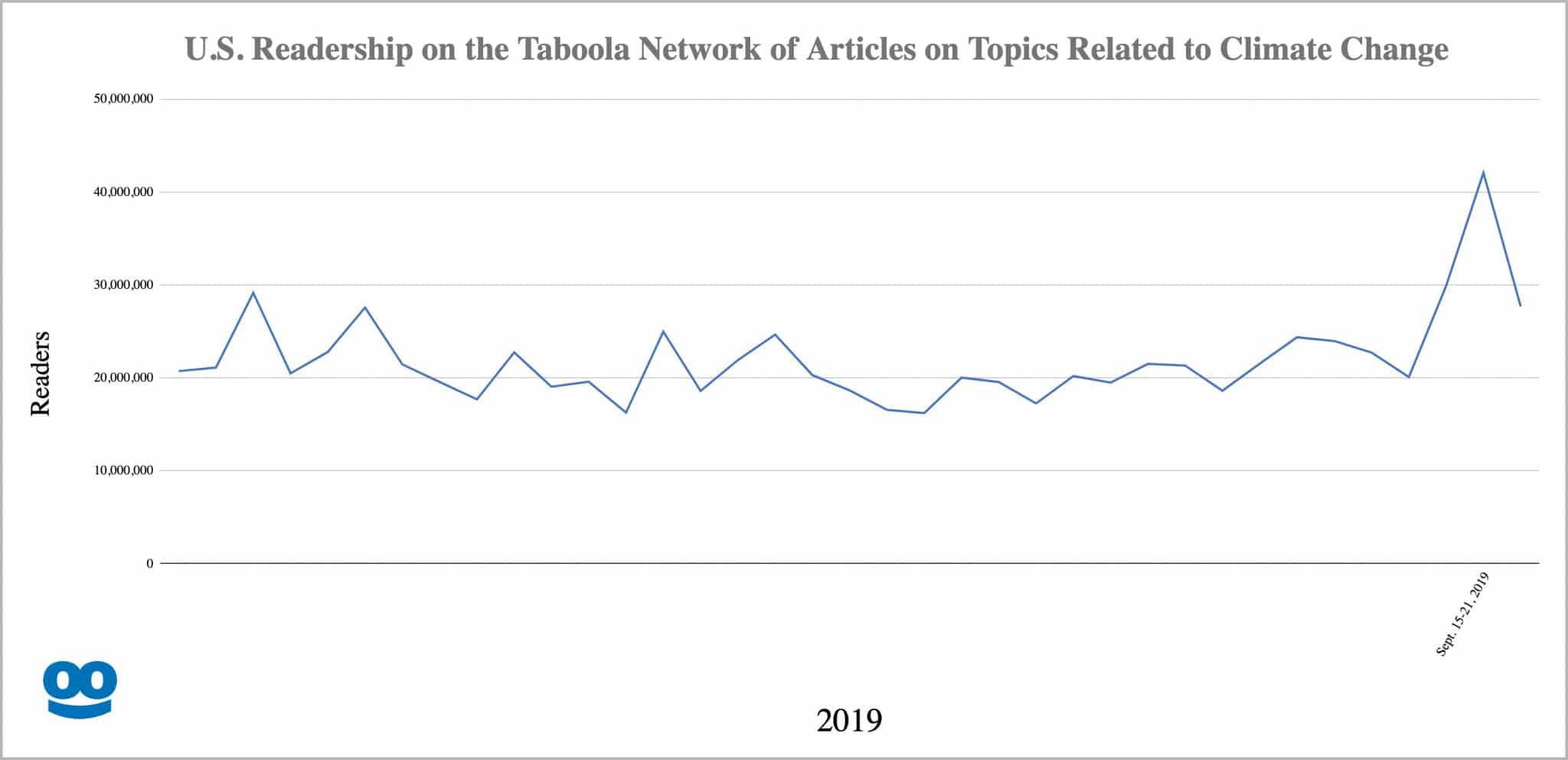
The dataset shows readership on the Taboola publisher network, which consists of more than 1,300 US news websites including national, local, and digital-native news organizations. We looked at articles about topics including climate change, carbon dioxide, environment, global warming, greenhouse gas, Greta Thunberg, and pollution.
The vast scope of our network offers a uniquely broad view of what people are reading on US news websites.
Many of our publisher partners were among those who joined the effort to increase climate change coverage such as Bloomberg, The San Francisco Chronicle, the Weather Channel, CBS News, Slate, and more.
The collective of news organizations was organized by the Columbia Journalism Review and the Nation.
“It started just out of frustration. It seemed like the scale of what’s going on with the climate was not being matched with the appropriate amount of coverage,” CJR editor and publisher Kyle Pope said of the effort. “It just wasn’t getting as much ink and airtime as it deserved.”
The intention was for it to be US-focused, but Pope said it quickly gained momentum overseas where climate change is not a political flashpoint. Eventually, more than 300 news organizations from around the world joined in.
While the scientific intricacies and politicization of climate change may have been barriers to coverage in the past, Pope said the time was ripe for a breakthrough, particularly at the local level.
“I think that what’s changed is that the effects have just become so apparent and far reaching that it’s hard to ignore. There have been fires and droughts,” Pope said. “There’s basically no place on Earth where you can’t physically see the effects of this.”
CNN chief media correspondent Brian Stelter’s Reliable Sources newsletter highlighted our findings with some words of encouragement to the rest of the news media:
“In times when newsrooms are short-staffed and financially constrained, here’s hoping great journalism on climate change keeps happening year-round, not just when newsy UN events are upon us or when the next natural disaster strikes.”
Looking ahead, Pope says they’re already laying the foundation to build on this initial effort and he’s encouraged by the sense of enthusiasm from participating news outlets.
Digging into the data
Focusing on articles about climate change specifically, we saw over 13 million unique daily readers during the week of Sept 15-21. That’s a 55 percent increase over the topic’s 2019 baseline.
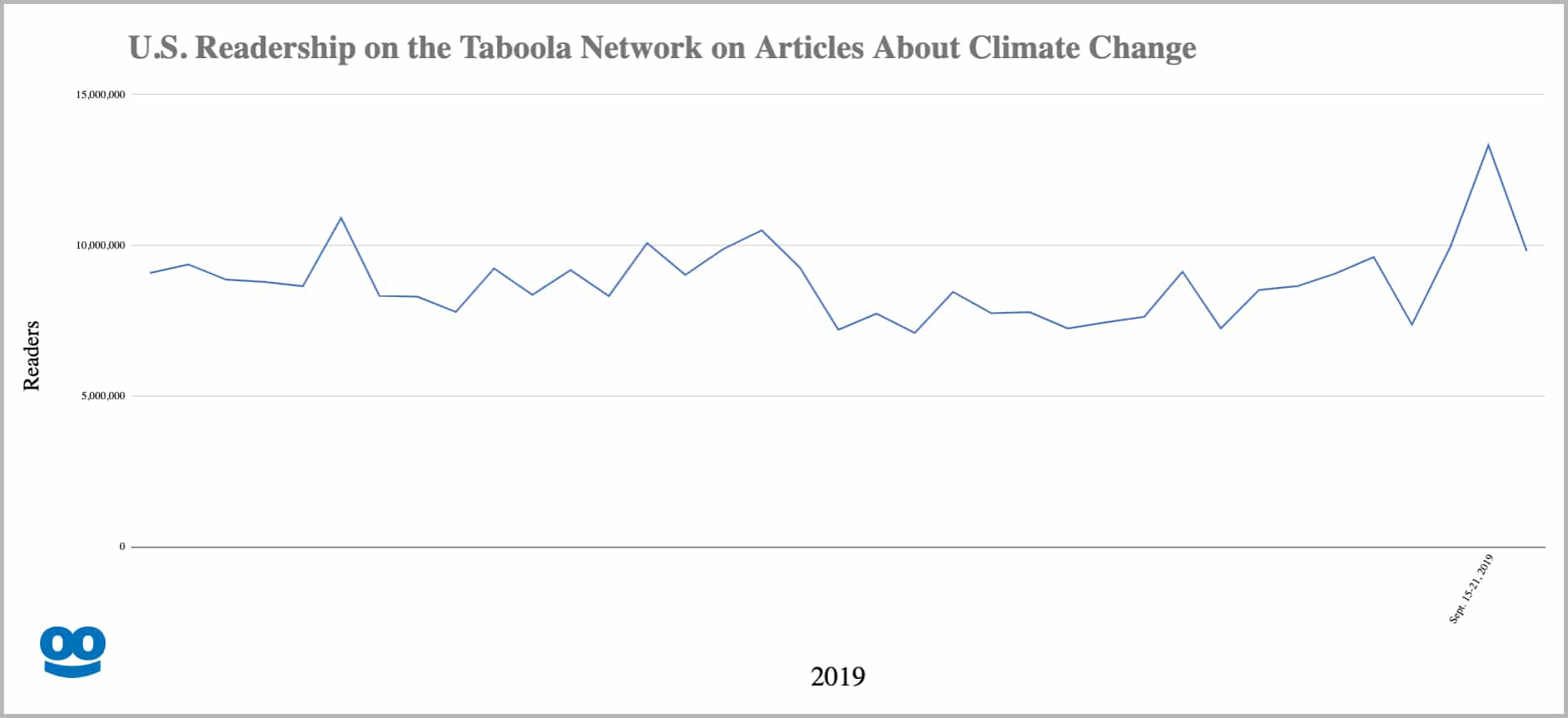
Articles about Greta Thunberg, the teenage activist from Sweden who has become renowned for her powerful calls to action urging world leaders to address climate change, saw the greatest gains in readership out of all the topics we researched.
We saw nearly 10 million unique daily readers on stories about Thunberg during the week before the UN summit. We counted unique readers on a per topic basis, so there’s likely overlap in the readers of stories about climate change and Greta Thunberg.
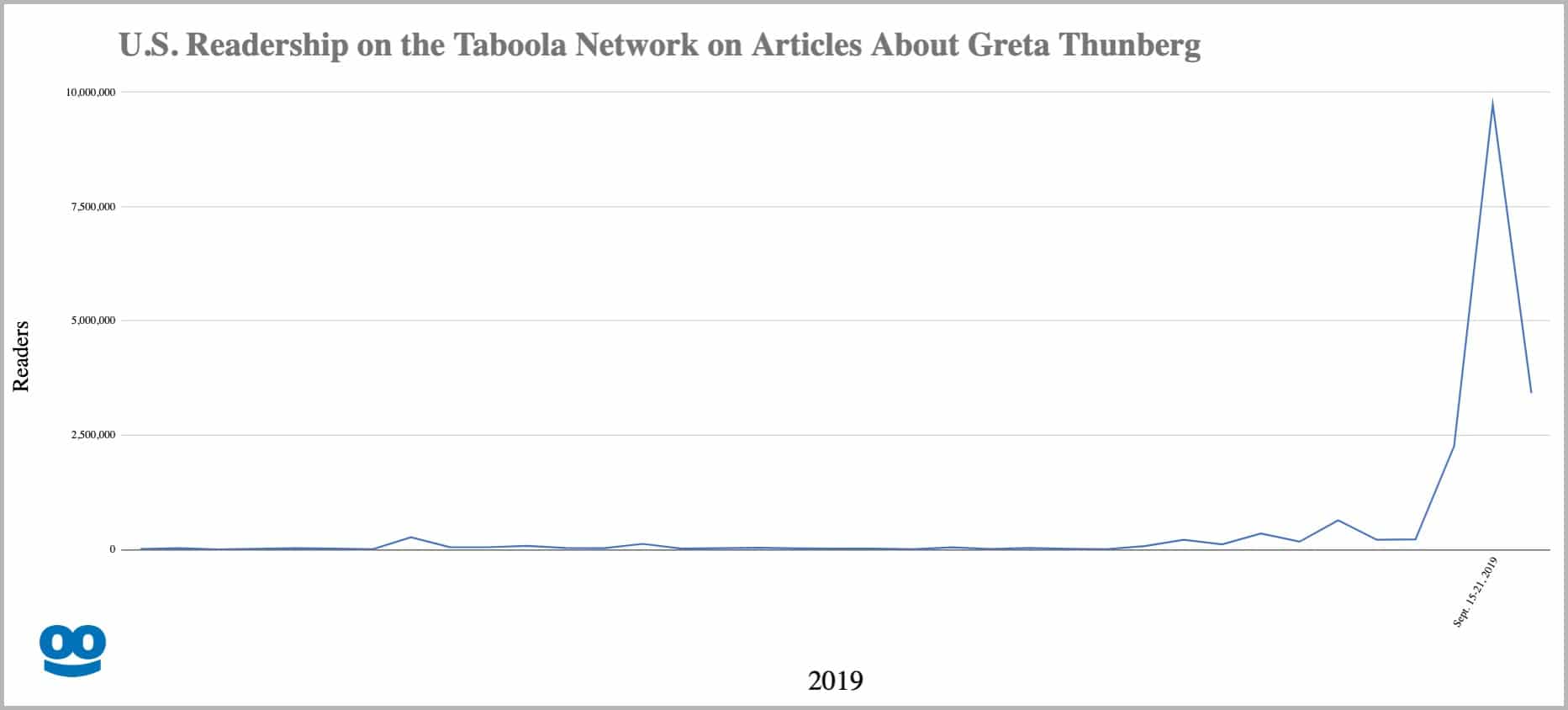
Overall, we can certainly see that the number of readers increased compared to past weeks in 2019, but what about the number of articles? This effect of more readers was, in theory, caused by the CJR-led effort to increase coverage.
Our systems count all the articles receiving traffic during a particular time period, which highlights new as well as older stories that readers are consuming.
The week before the UN summit, we saw over 4,500 articles about climate change receiving traffic, 2.5 times more than the average for the rest of 2019.
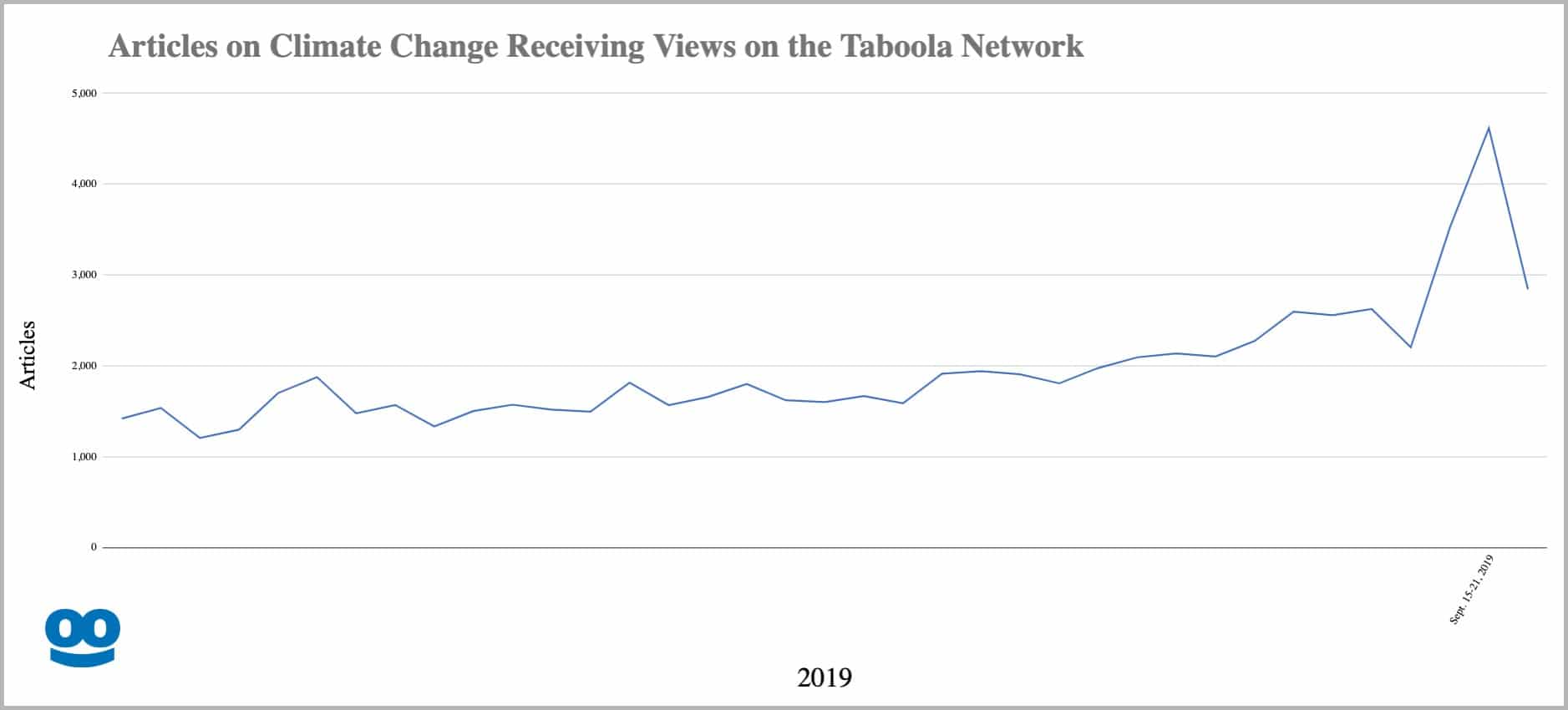
Again, since this is a measure of traffic received, we can’t say confidently that the production of articles more than doubled.
It’s likely that many of the articles making up this much increased number were new stories written due to the CJR campaign, but it’s also possible publishers re-promoted older articles and that readers were finding older articles in links from the new articles.
We can conclude was confidence, however, that the CJR effort resulted in vastly more stories in circulation about climate change, which led to more many more readers paying attention.
How you can view this trending topic data
Taboola’s news publisher partners have access to data on trending topics in the Topic Insights part of Newsroom, our real time audience analytics platform.
Taboola Newsroom helps publishers’ editorial teams understand not only the biggest topics overall, but also the most popular among audiences on social media and search. It also let’s publishers foster audience loyalty by letting them understand the topics core audience members are reading on their sites and elsewhere on our network.
It’s a fun bubbly-matrix filled with useful data. Here’s how it looks.
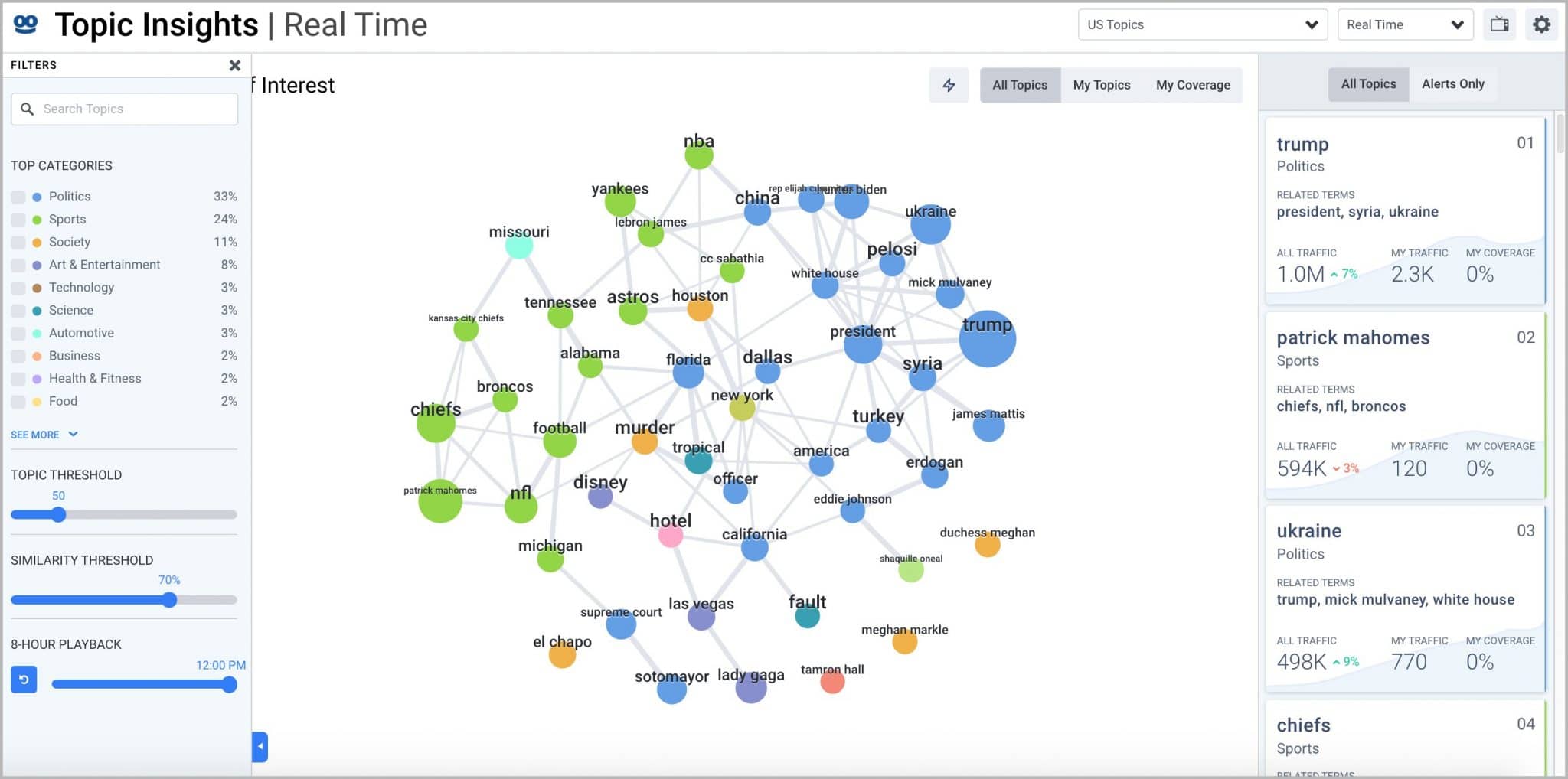
There’s also a publicly available version of Topic Insights on our Taboola Trends page.
Beyond these options, we’re always looking for interesting ways to use our data to help bring context to how news readers are interacting with real-world events such as measuring which presidential candidates are getting the most attention.
Feel free to DM @franberkman on Twitter if you’re doing any research or reporting that you think our data could help support.